Always In The Learning Mode
Finding what works is both a guiding principle and a driving force for this machine tool builder.
Share



ECi Software Solutions, Inc.
Featured Content
View More

Autodesk, Inc.
Featured Content
View More

Hwacheon Machinery America, Inc.
Featured Content
View More

At the beginning of this year, Haas Automation reported producing more than 12,500 CNC machine tools in 2006. The company says this record production makes it the largest unit-volume builder of CNC machines in the world and the largest dollar-volume builder in North America.
All Haas products are built in the company’s 1-million-square-foot manufacturing complex in Oxnard, California. When Modern Machine Shop toured this facility recently, one impression overrode all the others: This company is always learning. It continually applies the lessons it learns to improve both factory operations and its products—developments that go hand in hand.
Because builders like Haas use machine tools to make machine tools, other shops and plants can learn from them, too. A closer look at the company is especially worthwhile because it makes a point of using its own production facilities as a test bed—not only for machining processes but also for learning processes.
Job Shop Origins
To a great extent, this pattern can be attributed to the company’s origin as a job shop. Gene Haas designed a programmable rotary indexer to boost productivity in his own job shop. In 1983, he founded Haas Automation and began building indexers for the trade. The company built its first machining center in 1988, but did not relinquish its job-shop mentality as business grew rapidly. Job-shop thinking persists to this day, as General Manager Bob Murray points out.This explains much about how the company operates and how it approaches the market. Metalworking job shops have always been the primary targets for Haas machine tools, so thinking like a job shop keeps the company keyed into its core customer base. Thinking like a job shop also influences the company’s approach to manufacturing.
Efficiency, flexibility and practicality are three top values that govern all of the company’s shop floor activities—as they do in any successful job shop. This is why you see such a range of machining strategies in its production facilities, from stand-alone VMCs with automatic pallet changers to full-blown flexible machining systems (FMSs). Each is suited for the type and volume of part being produced. Cells consisting of several like machining centers served by a centralized pallet shuttle system are common (some were originally installed when Haas moved to the Oxnard site in 1997.) Perhaps the most extreme example is an FMS with five 630-mm pallet Mori Seiki HMCs, each with 330 tools, spotted along a linear pallet transfer system serving six load/unload stations and a parts-washing station. Installed by Ellison Technologies in one of the newer buildings of the Oxnard complex, the cell is the largest of its kind in the United States.
Although these conspicuous installations of highly evolved automation catch the attention of the outside visitor, the company does not try to be the definitive showcase of such technology. Rather, it sees itself very much as a work in progress, an ongoing experiment in methods to build machines more efficiently and at a lower cost. “It’s been that way from the beginning,” Mr. Murray says, alluding to the company’s earliest days as a start-up in Sun Valley, California.
That said, the direction being taken is clear. The goals are simple. The point of automation, for example, is to keep labor content low (or to keep worker productivity high, another equally valid way to state this). The company is shooting for an average ratio of 9 spindle hours per worker hour. Labor costs are held to less than 10 percent of sales.
Here are some of the principles Haas follows to stay on target:
- Schedule production for one operator-attended shift and two unattended shifts per day. Many cells are making parts 22 out of every 24 hours.
- Assign one operator per multi-machine cell.
- Use multiple part setups on as many machining centers as possible to minimize operator intervention. For example, tombstone fixturing is widely used on pallets that are swapped in and out automatically. Haas says it has more than a thousand workpiece pallets in the complex.
- Use load/unload automation on lathes that are built for smaller workpieces and short cycle times.
- Favor robotic handling systems to achieve continuous flow. At present, eight cells consisting of Haas lathes or machining centers and a six-axis, articulated-arm Motoman robot are in operation. Four more are planned. The robot transfers parts between the machines, thus reducing cycle time, in-process inventory and operator involvement.
According to Mr. Murray, production areas are revamped or reconfigured as necessary, to streamline production and increase throughput. Because machine tool components fall in a wide range of sizes and quantities, workflow is a mix of just-in-time (JIT) and batch modes, depending on which works best. Larger parts such as bases and columns are pulled through the system by incoming orders; smaller parts and common components are batched to maintain inventory levels set by production forecasts.
Unique Opportunity
Machine tool builders have a unique opportunity to use their own products and learn from their performance. According to Mr. Murray, more than 50 percent of the machine tools in production at the Oxnard facilities are Haas products. Almost every model in the company’s current line-up is used somewhere in the plant. Feedback from in-house users frequently leads to improvements in product design.For example, an EC1600 HMC used on the shop floor revealed some problems with chip flow. The sidewalls of the base were modified to correct the problem, and this fix was implemented on the production version of this machine.
Shortcomings in a gantry load/unload part transfer system on a cell of Hitachi Seiki lathes that was installed by this builder inspired design engineers at Haas to develop their own improved part transfer system for this application. This system is now produced and sold as an option to buyers of Haas lathes.
The company keeps as many processes in-house as possible for closer control of cost, quality and delivery. It will bring production in-house when it is clear that “we can do it better and cheaper ourselves,” as Mr. Murray puts it. A good example is gear production, which was brought in-house early on when quality issues with an outside supplier became apparent. All Haas gears are now made on a complete machining line that includes a Koepfer gear hobber, one of only two such machines in the United States when it was installed. Having this equipment on its own floor creates an opportunity for the company to learn firsthand about these operations and to discover further efficiencies.
In some cases, models that did not prove successful in the marketplace find a home in the Haas factory. A VB bridge-style machine now used to machine side-mount toolchanger carousels is an example. Another copy of this model was modified for longer bed travel by recycling leftover base castings that were otherwise obsolete when this model was discontinued.
In fact, making good use of these components reflects the company’s emphasis on manufacturability as a design objective.
Manufacturability
Here are some of the other ways in which the company encourages manufacturability:- Following modular construction. Machine tool models share components wherever possible.
- Repurposing components. New models are designed around existing component designs. “We don’t create any new parts unless we have to,” Mr. Murray says.
- Keeping parts simple. Engineering is driven by the cost and complexity of manufacturing new designs.
- Using as few parts as possible. Make fewer parts but in larger volumes.
Following these principles pays off in two ways over and above the efficiencies they create on the shop floor. First and chief of these, Mr. Murray says, is the benefit to customers. Simple designs are more reliable and easier to service in the field, he adds.
Second, shopfloor efficiencies both drive and support the company’s approach to serving its market. Perhaps no other machine tool builder has been as prolific as Haas in introducing new models. The company rarely exhibits at a trade show without displaying several machines that haven’t been shown before. Many of these are prototypes that could be produced expeditiously thanks to streamlined workflow.
Product managers listen closely to reactions from show attendees. This is an effective way to find out what potential buyers are truly interested in. “We’d need more…” “This machine would be great for…” “If only it could…” This feedback is reported to design engineers, who alter products to meet these emerging expectations. This process often leads to unexpected opportunities to reach new buyers. The company’s entry into routers, for example, was an offshoot of development efforts in gantry-type machines.
“We are not afraid to have a flop and get out of the market quickly,” Mr. Haas says, adding that this assertion reflects his company's basic strategy of sticking to the kinds of machines “that buyers want to buy.”
Machine Tools For The Masses
This unwavering focus explains how Haas has managed to develop a wide product line (69 VMC models, 17 HMC models, 20 lathes and 45 rotary tables) while staying squarely within a certain niche, which the company defines as the market for commodity machine tools that appeal to job shops.Building high-end machines in small numbers for specialty applications does not fit into either the company’s production or marketing strategies. Haas is less intent on pushing the envelope of machining capability than it is on leaving no gaps in its product offerings.
However, the company is an innovator in its own right. While it may not be pushing the limits of machining technology, it has been pushing CNC mills and lathes into new territory. The company’s line of Office Machines is one example. Able to fit through a standard office doorway, these machines can be installed in engineering and research labs or any location where access to CNC machining is needed on a project.
Perhaps the most notable example of new thinking from Haas is the development of a sales-and-service network based on the Haas Factory Outlet (HFO) concept. Because the traditional dealer/distributor model presented an uneven level of sales, service and applications support for Haas machines, this system of standardized, certified factory outlets was designed to bypass weaknesses in other channels altogether. HFOs are locally owned and operated directly by selected distributors who must meet certain criteria regarding production selection, applications engineering and service technician staffing. Each HFO functions as a stand-alone entity that maintains a uniform corporate image and level of customer service.
Many job shops and manufacturing companies are also learning to think beyond part production as the full extent of their opportunity to meet customers’ needs. They are looking to the entire product lifecycle to discover ways to add value and build relationships. At the same time, they are pursuing constant renewal and improvement of operations on the plant floor. They should be leaving the same impression with visitors that a tour of Haas Automation does: This company is always learning.
Related Content
How I Made It: Amy Skrzypczak, CNC Machinist, Westminster Tool
At just 28 years old, Amy Skrzypczak is already logging her ninth year as a CNC machinist. While during high school Skrzypczak may not have guessed that she’d soon be running an electrical discharge machining (EDM) department, after attending her local community college she found a home among the “misfits” at Westminster Tool. Today, she oversees the company’s wire EDM operations and feels grateful to have avoided more well-worn career paths.
Read MoreFinding Skilled Labor Through Partnerships and Benefits
To combat the skilled labor shortage, this Top Shops honoree turned to partnerships and unique benefits to attract talented workers.
Read MoreIn Moldmaking, Mantle Process Addresses Lead Time and Talent Pool
A new process delivered through what looks like a standard machining center promises to streamline machining of injection mold cores and cavities and even answer the declining availability of toolmakers.
Read MoreInside Machineosaurus: Unique Job Shop with Dinosaur-Named CNC Machines, Four-Day Workweek & High-Precision Machining
Take a tour of Machineosaurus, a Massachusetts machine shop where every CNC machine is named after a dinosaur!
Read MoreRead Next
Plugging Into Tombstone Productivity
Customized software helps this machine tool builder maximize the output of its horizontal machining centers.
Read MoreBuilding Out a Foundation for Student Machinists
Autodesk and Haas have teamed up to produce an introductory course for students that covers the basics of CAD, CAM and CNC while providing them with a portfolio part.
Read More5 Rules of Thumb for Buying CNC Machine Tools
Use these tips to carefully plan your machine tool purchases and to avoid regretting your decision later.
Read More


























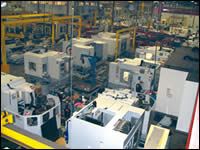
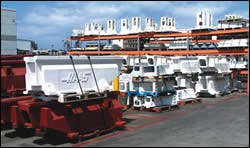
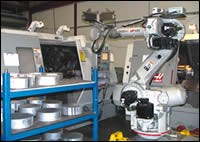
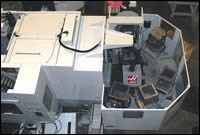
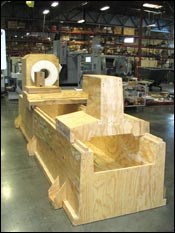








.jpg;maxWidth=300;quality=90)


.jpg;maxWidth=300;quality=90)














